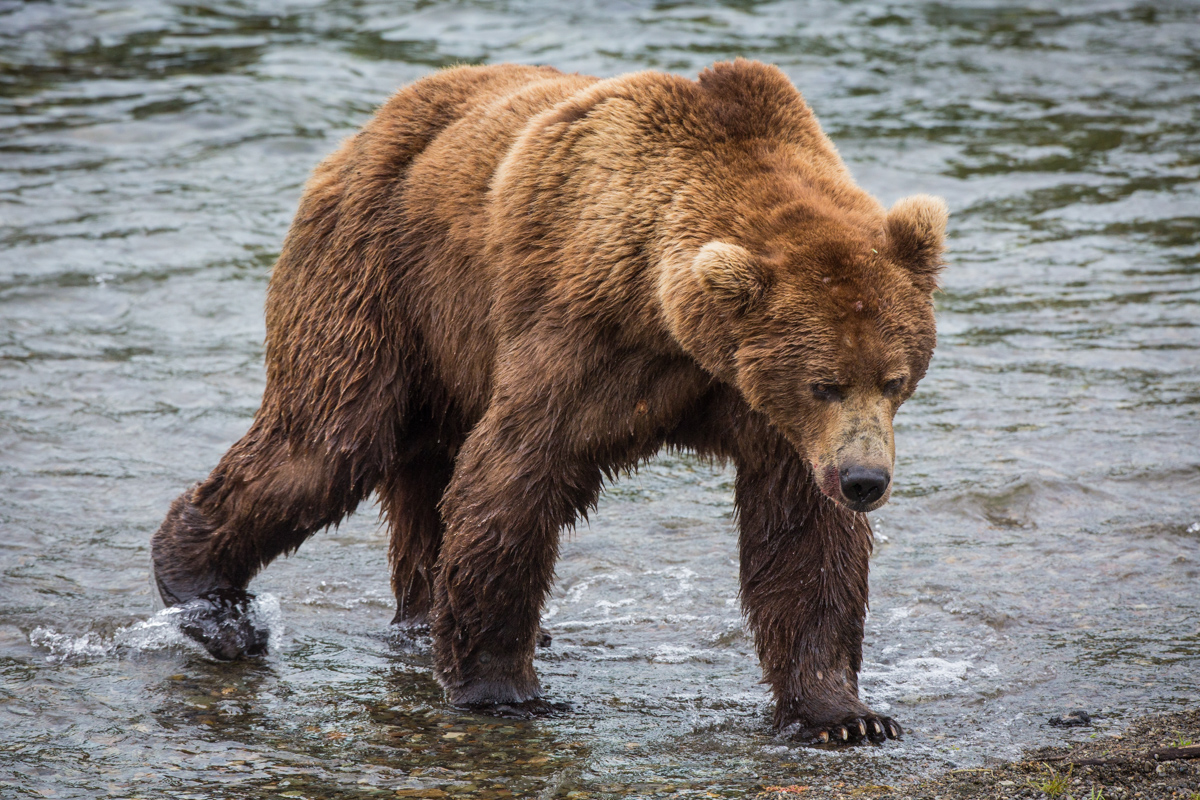
I’ve just returned from a guiding a five day trip to the coast of Katmai National Park. While it is an amazing place (and I’ll be leading another trip there next year if anyone want to join me), where it is easy to make beautiful images, it is also a place where telling the story of the experience takes effort.
Photographic stories are probably one of the hardest things we do as image-makers. Good story-telling photos often don’t follow the classic rules of successful images. They aren’t always (or even often) direct landscape images, wildlife shots, or portraits. There is more to them. To make them work the compositions often need to be strange. These types of photos rarely play well on social media (when you gauge your success on the number of Facebook and Instagram likes), because just as they take effort to create, they also take more effort to view.
Story-telling images are more than eye candy.
First, take a look at the top image on this post, the full-frame portrait of the bear. Now, it’s a fine photo. The image is sharp, the expression and posture interesting, and the background clean. It is a good portrait of this particular bear, but what story is there? Really, there isn’t one. This is an illustration, to be observed quickly, perhaps admired, but then passed over to whatever is next. Candy photo.
Now look at this one:

In this image, of a photographer shooting a bear on the far side of a river, there is something happening. It’s not exactly an excellent photo, the composition is skewed to the right, the light: meh. And yet there is a story. I can very easily see this photo appealing to a travel magazine photo editor, or for a brochure about bear-viewing in Alaska.
But it isn’t just that this is likely a more sale-able image, it is also that it tells a story.
Check out this image:

Again, not exactly a traditional, great photo. It definitely doesn’t follow the rules, and in fact, it takes a moment to figure out exactly what you are seeing. But once you do, there is a lot going on.
I made this image just before midnight as this bear grazed on the Water Parsley and Cow Parsnip flowers just behind our tents. I snapped this image with a mid-length telephoto right over the rain fly of my clients’ tent. When you realize what you are seeing, the whole situation snaps into focus. Not just a photographer viewing a chilled-out bear at the crowded Brooks River (as above), but a very wild bear, seen from a tent camp!
Now that is a much more exciting and compelling story: camping out while bears approach disconcertingly close to your tent at night. That’s a real story. The eye contact of the bear, the blurred tent and the wildflower meadow are all part of the story.
Upon first view, it’s shocking, seems dangerous even to camp in that situation, and that emotion pulls you in closer to the image. Then, if you know even a little bit about bear behavior, that closer will look will make you realize that this bear is not threatening, it’s grazing. The eye contact is not a sign of imminent attack, but a subtle acknowledgement of my presence. There is a multi-level story in this photo.
Despite it’s lack of flashy colors, or perfect composition, this may be my favorite image from the trip to Katmai. It just says so much about our little camp on the coast of Katmai National Park.
Don’t be afraid to break away from the eye-candy of social media. Compelling images don’t have to beautiful, but they do have to tell an interesting story.
